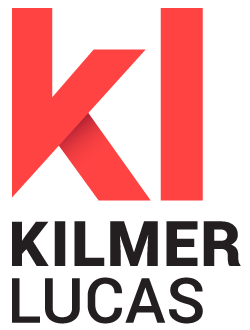Xenon Pharmaceuticals (NASDAQ:XENE) and its development and commercialization partner, Teva Pharmaceutical Industries (NYSE, TASE:TEVA), remain fully committed to the development of TV-45070 for neuropathic pain indications, even though it failed a Phase 2b study in pain due to osteoarthritis (OA) of the knee.
“We and Teva believe that the reason the topical ointment did not reach its endpoints was most likely the result of not reaching the subchondral bone, which appears to be the site initiating pain in OA,” Xenon president and CEO, Dr. Simon Pimstone, says in an interview with BioTuesdays.com.
“While we know the drug is active and gets into the skin, we just don’t know if we got a sufficient amount of drug or any drug into the knee tissue or bone, despite supportive penetration data in animals,” he adds.
Dr. Pimstone says Teva and Xenon have always been committed to a broad development plan for TV-45070 in both nociceptive, or OA, and neuropathic pain.
TV-45070 is a small molecule inhibitor of the sodium channel Nav 1.7 and other sodium channels, including those expressed in the pain-sensing peripheral nervous system.
According to Dr. Pimstone, Nav 1.7 has never been studied in meaningful clinical trials, so the correct indication is still unknown. Xenon has developed a topical inhibitor of the channel, which is partnered with Teva, and a distinct oral molecule that is highly selective for the Nav 1.7 channel and is partnered with Genentech.
The strategic alliance with Teva will study the drug in a minimum of three Phase 2 or later trials to understand if TV-45070 is best suited for nociceptive pain or neuropathic pain, such as post-herpetic neuralgia (PNH), or shingles. Xenon also has an option for a U.S. co-promotion interest with Teva.
Teva’s Phase 2b trial in PNH is progressing as planned, with top-line results expected in the second half of 2016. The trial aims to enroll about 330 patients, who are being randomized into a placebo arm, and two treatment arms: 4% TV-45070 and 8%.
Dr. Pimstone explains that in PHN, the Nav 1.7 sodium channel is highly expressed in the skin and sensory nerve endings. “The difference between OA and PHN is that in PHN, we have a strong likelihood of being able to engage the target at the site, which is the skin,” he adds.
“Neuropathic pain represents a distinct mechanism of chronic pain to OA and, as such, the potential for positive study results in PHN is not impacted by the OA data,” he says.
Jefferies analyst Biren Amin agrees. “Efficacy in PHN is supported by a proof-of-concept Phase 2 trial in 70 patients with refractory PHN where a treatment difference in mean daily pain score was observed versus placebo,” he said in a research report earlier this month.
The Phase 2b trial in PHN will also stratify patients with the R1150W gene variant, where a greater response was observed versus non-carriers of the gene in an earlier proof-of-concept PHN study.
Dr. Pimstone says OA was the first study of TV-45070 and it was worth doing. OA is a large market opportunity in an area of medical need. The OA study demonstrated a favorable safety and tolerability profile for TV-45070, with no drug-related serious adverse events. “We recognized that the hurdle we faced was getting the drug to the site of the pain.”
Xenon was founded on its proprietary Extreme Genetics platform, which has yielded a broad development pipeline and multiple pharmaceutical partnerships, including Teva and Genentech.
He contends that TV-45070 and an orally active pain drug candidate partnered with Genentech are much more potent in their blockade of the sodium channels than existing pain drugs on the market, which were largely developed off the back of lidocaine.
Xenon, which went public last November, was founded on its proprietary Extreme Genetics platform, which Dr. Pimstone explains is the study of families who display inherited severe phenotypes, as a way to discover validated drug targets.
The Extreme Genetics platform has yielded the first approved gene therapy in the EU and a broad development pipeline and multiple pharmaceutical partnerships, including Teva, Genentech and an undisclosed cardiovascular target with Merck. Xenon could receive more than $1-billion in future milestone payments from its partners, excluding royalties on sales.
The first approved product from Xenon’s platform is Glybera, a gene replacement product for patients with lipoprotein lipase deficiency (LPLD), a rare genetic disorder.
People with LPLD have very high triglyceride levels because they lack lipase, the enzyme that clears triglycerides from the blood. Raised triglycerides symptoms include severe or multiple pancreatitis attacks, despite dietary fat restrictions.
Xenon developed an LPL gene sequence that it licensed to uniQure, which developed Glybera and has worldwide rights to the gene therapy. uniQure sublicensed Glybera to Chiesi Farmaceutici of Italy for sales in the EU and more than 12 other countries. The companies expect to launch the drug this year.
Dr. Pimstone says Xenon will receive a royalty in the low twenties of what uniQure receives from Chiesi and a low-to-mid single-digit royalty on uniQure sales.
Xenon’s strategic alliance with Genentech includes milestone payments of some $640-million, of which $32-million has been earned to date in upfront and milestone payments plus additional FTE funding that has also been received.
Dr. Primstone notes that a Nav 1.6 inhibitor could represent the first real treatment and hopefully a cure for Dravet and potentially other forms of epilepsy that are mediated by Nav 1.6.
While the Teva topical drug candidate blocks multiple sodium channels, Genentech’s GDC-0276 is an oral, selective inhibitor of the Nav 1.7 pain channel. “The drug is 50-to-1,000 fold more potent against the 1.7 channel than other sodium channels,” Dr. Pimstone contends.
Genentech is currently conducting a Phase 1 study of GDC-0276, with completion of enrollment slated for the end of 2015, he adds.
Xenon and Genentech’s second collaboration is focused on the discovery of novel pain targets in rare human pain disorders, where individuals have either an inability to perceive pain or where individuals have non-precipitated spontaneous severe pain. A key goal of the collaboration is to identify new pain targets for drug discovery in 2015.
In its proprietary pipeline, Xenon is advancing treatments for Dravet Syndrome, an orphan disease of severe childhood epilepsy, and another product for moderate-to-severe acne.
Dr. Pimstone explains that XEN801 for acne is designed to be an inhibitor of a particular lipid-regulating enzyme, know as SCD1, which is expressed in human sebaceous glands.
“If you can inhibit SCD1, we believe that you can decrease production of monounsaturated fatty acids and, in turn, reduce the size and number of sebaceous glands and the production of skin lipids, which are important for acne,” he explains. “We think this is a very novel mechanism for acne that we hope should be safer than retinoids on the market.”
Xenon is planning to file a clinical trial application with Health Canada in the current quarter for a Phase 1/2 study of XEN801 in 100-to-150 patients with moderate-to-severe acne.
Two cohorts of 12 patients will be dosed in the Phase 1 portion to assess safety and pharmacokinetics to be followed in the fourth quarter this year with the Phase 2 portion to assess efficacy, safety and pharmacokinetics. The study should readout in the second half of 2016, with a change from baseline in total lesion count as the primary endpoint, Dr. Pimstone notes.
In Dravet, he points out that children can suffer up to 100 seizures a day, with a 10% rate of premature death by age 12. There are 7,500 to 15,000 patients with Dravet in the U.S.
Xenon has discovered a Nav 1.1 genetic link to epilepsy, with about 80% of Dravet caused by Nav 1.1 loss of function, he says. Other epilepsies are caused by increased activity of the Nav 1.6 sodium channel in the brain.
“This is a chemistry effort right now where we’re looking to optimize the properties of molecules that are potent inhibitors of Nav 1.6, so we can select a drug candidate for development and file an IND in 2016,” he suggests.
A Nav 1.6 inhibitor could be the “first real treatment and hopefully a cure for Dravet and potentially other forms of epilepsy that are mediated by Nav 1.6,” he adds.







